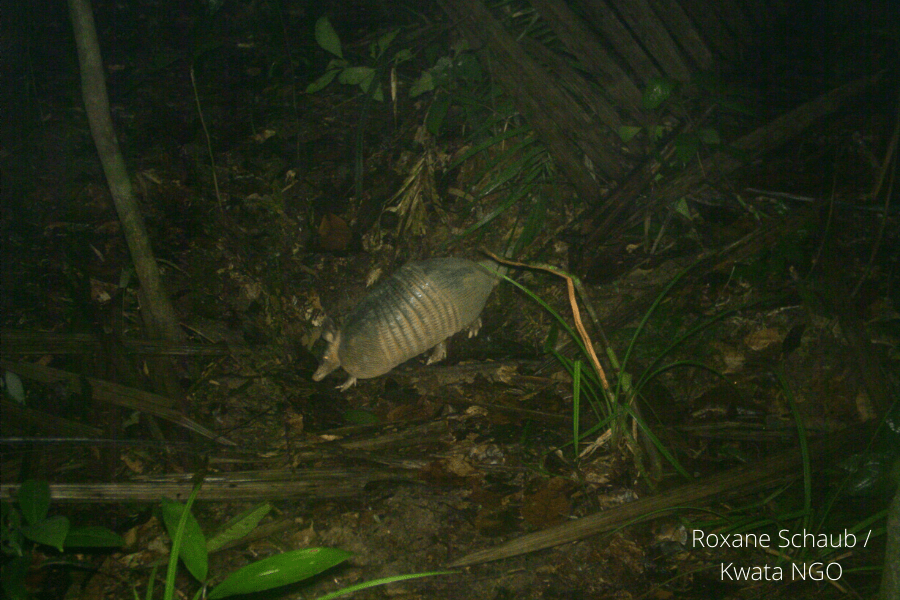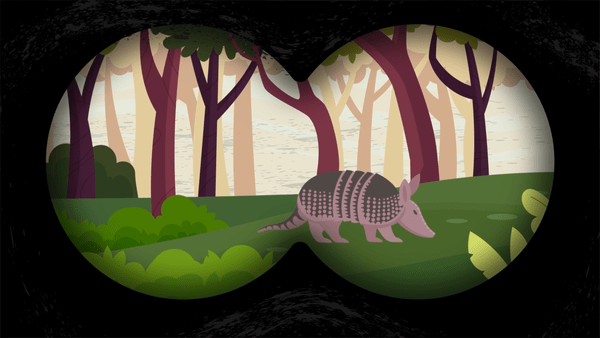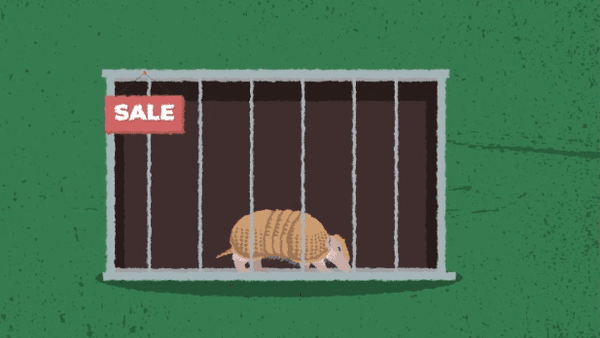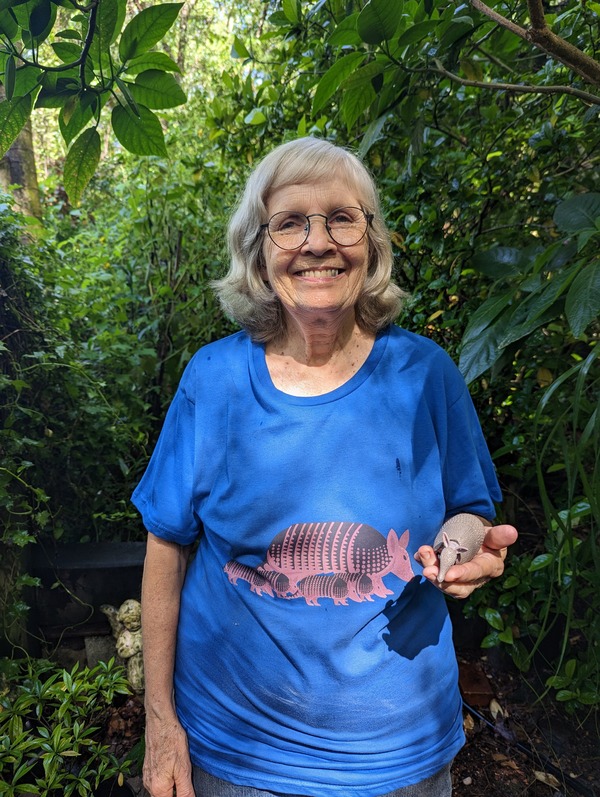
Greater long-nosed armadillo
Dasypus kappleri
Reproduction: Two offspring are born per litter. Believed to always be the same sex.
Weight: 8.5–10.5 kg
Diet: Generalist insectivore

Common Names
English – Greater Long-nosed Armadillo
Spanish – Mulita de Kappler, Cachicamo guayanés
German – Kappler-Weichgürteltier
French – Tatou de Kappler
Portuguese -Tatu-de-Quinze-Quilos, Tatu-Tinga, Tatu-Açú
How to Identify:
Carapace Grey Moveable bands 6-8 Tail 30-43 cm Other characteristics Enlarged projecting scales at the knee A wide base of the tail Lighter skin color on the part of the head below the head shield
IUCN Red List
Species are classified into one of nine Red List Categories: Extinct, Extinct in the Wild, Critically Endangered, Endangered, Vulnerable, Near Threatened, Least Concern, Data Deficient and Not Evaluated. Vulnerable, Endangered and Critically Endangered species are considered to be threatened with extinction.

Greater long-nosed armadillo Facts
- Until recently, Dasypus kappleri, D. beniensis and D. pastasae were considered a single species
- Large projecting scales on the knees
- Some researchers consider that Dasypus kappleri, D. beniensis and D. pastasae as distinct enough to warrant separation in a separate genus called Hyperoambon.
Habitat
- Tropical forest
 Population Trend
Population Trend
• Unknown
 Threats
Threats
• No major threats
• Deforestation and hunting in some small areas of its range
Here are some ways YOU can help keep armadillos healthy and safe:
– It is best to observe them from a distance and in silence.
– Our pets could attack them. It is important to keep your dog on a leash when you go for a walk, or keep your pets at home in an enclosed and safe area. In addition, taking care of our pets also means spaying and neutering them so that they do not breed without control.
– Another way to help protect the areas where armadillos live is by not starting fires.
– Armadillos love to live in nature, keeping them as pets is not good for them. Keep in mind that they don’t like selfies either.
– If you find an injured armadillo, contact a wildlife hospital so they can help it.
– Deforestation is often caused to make more land for livestock. Eating less meat may help save our forests.
Dasypus kappleri can be found in the below countries.
Click to learn what other xenarthran species live there too!
Test your new knowledge!
Test your new armadillo expertise by visiting our armadillo word search, puzzles, coloring sheets and name games!
Check out this video to see how much you have learned!
The Anteater, Sloth, Armadillo Specialist Group has a store that directly helps xenarthran conservation!


 Population Trend
Population Trend Threats
Threats











